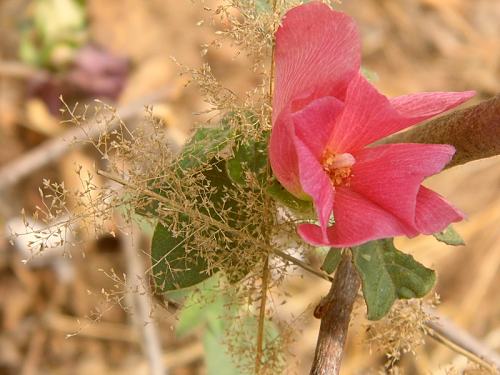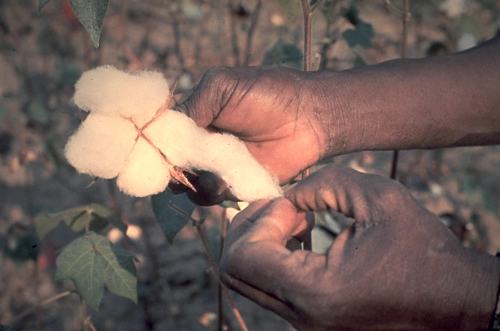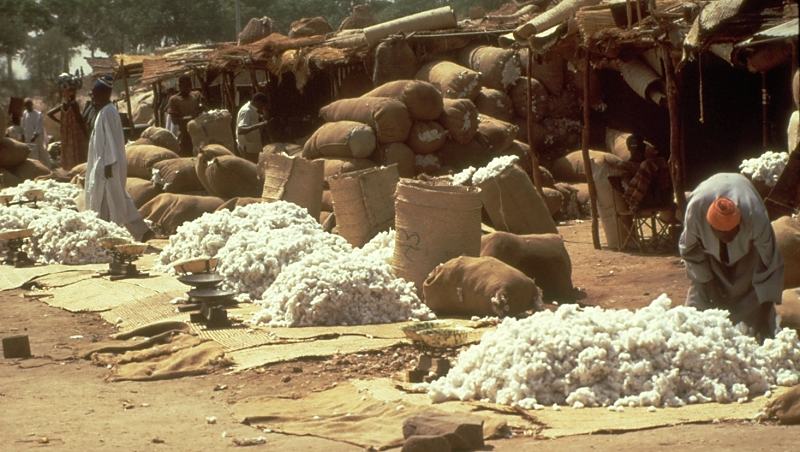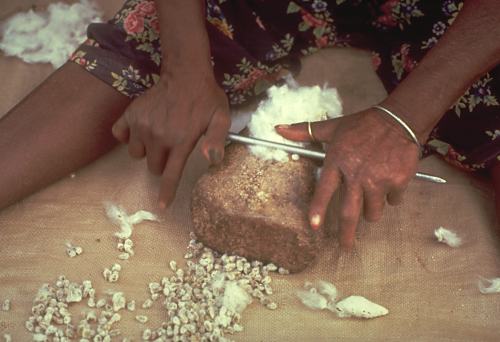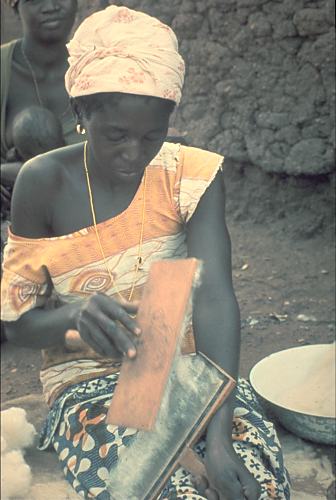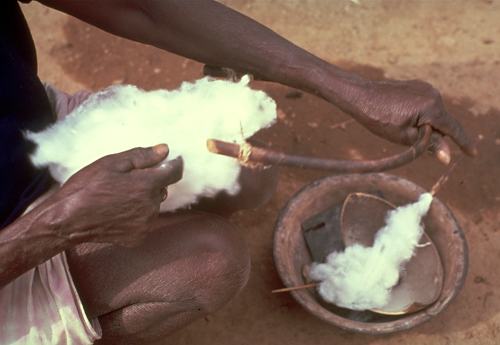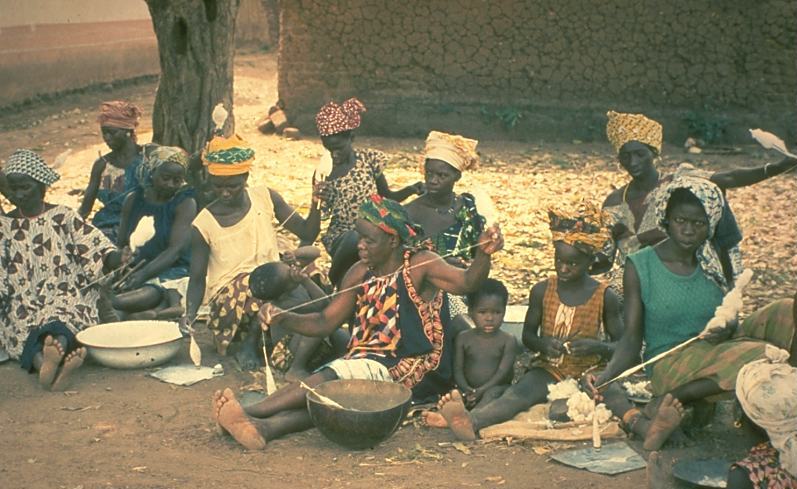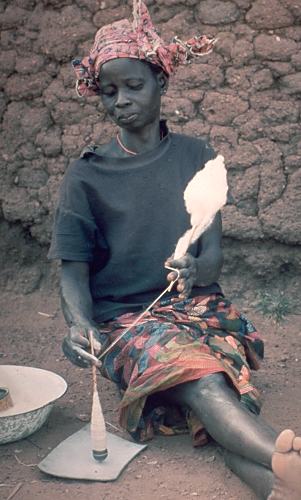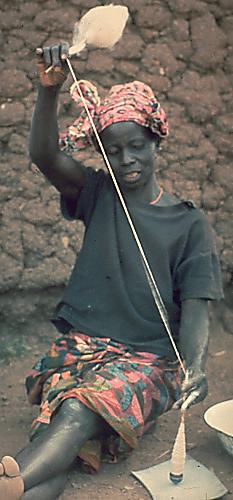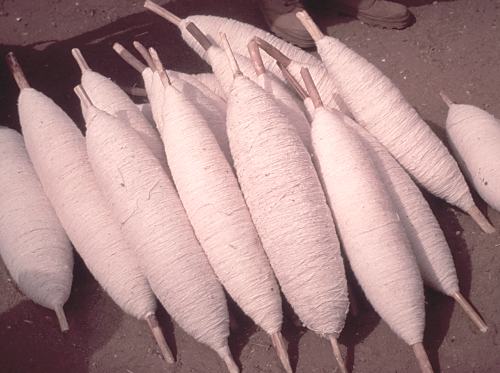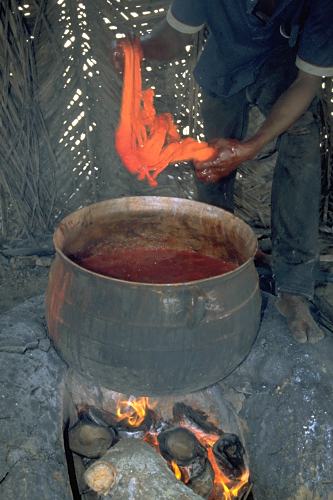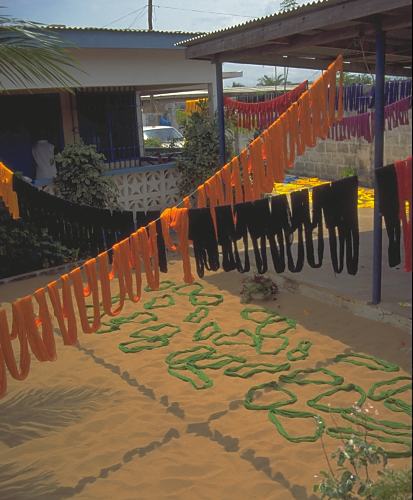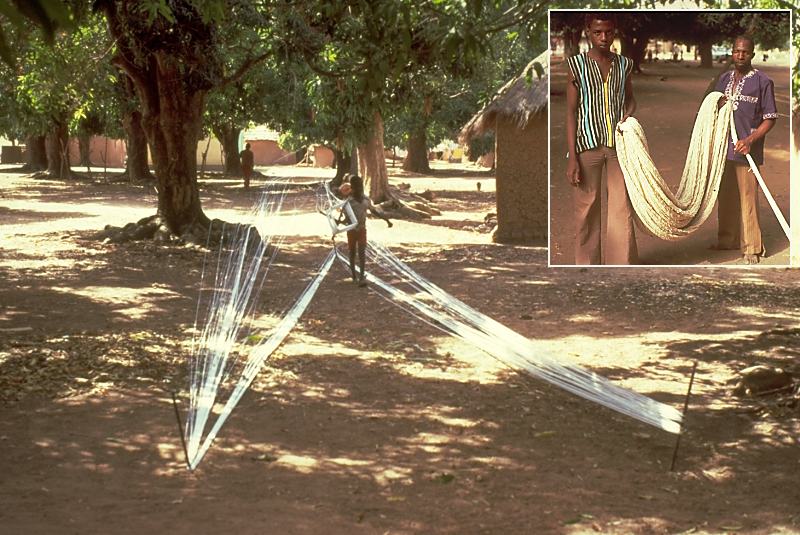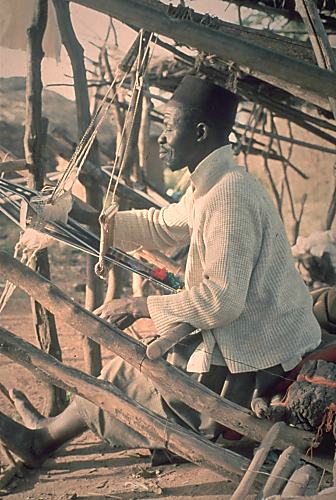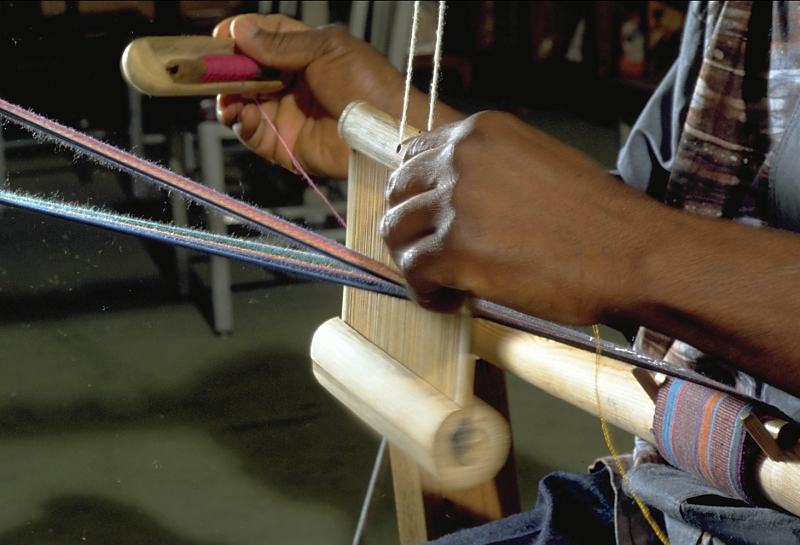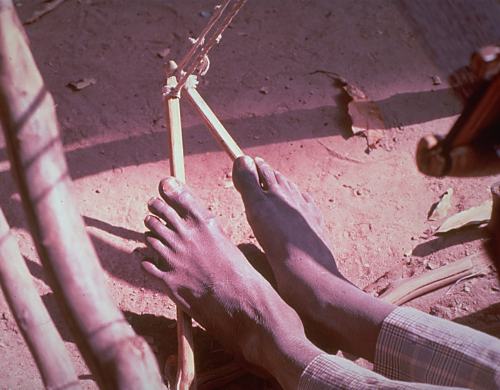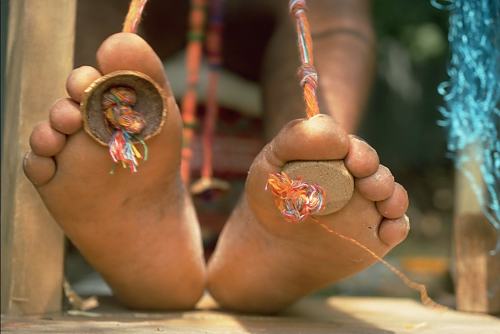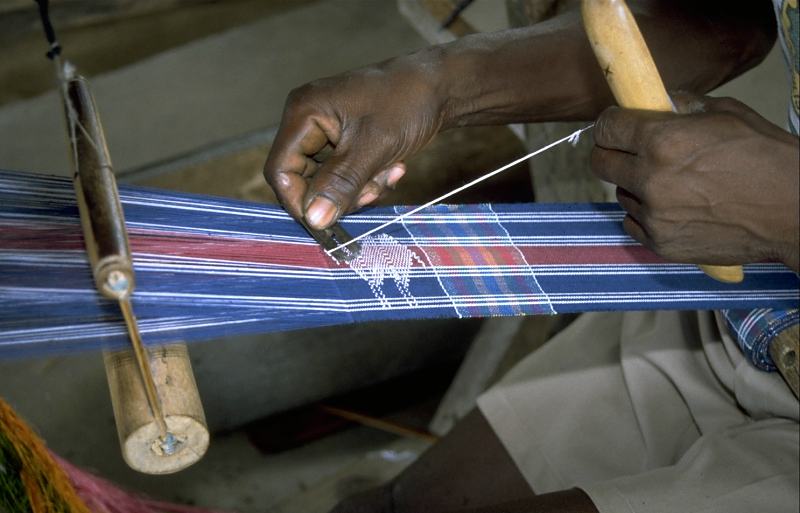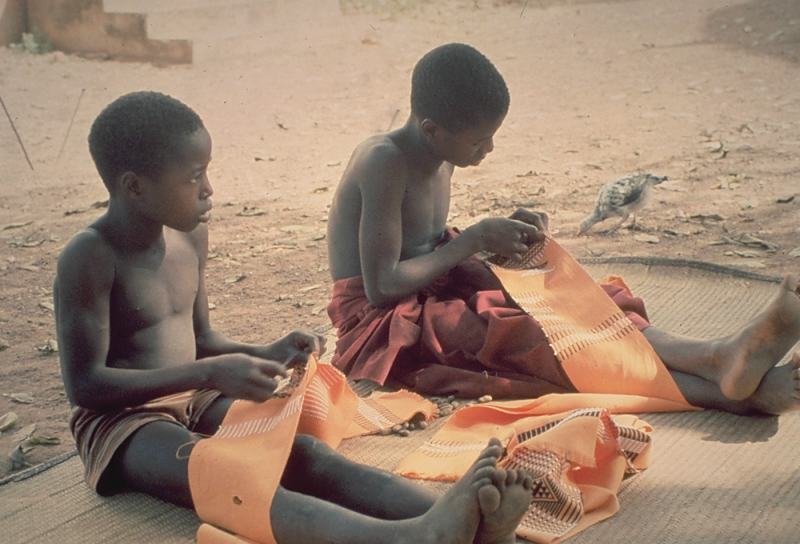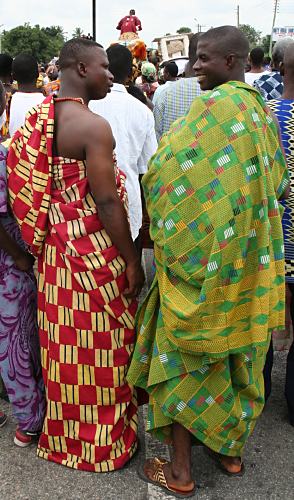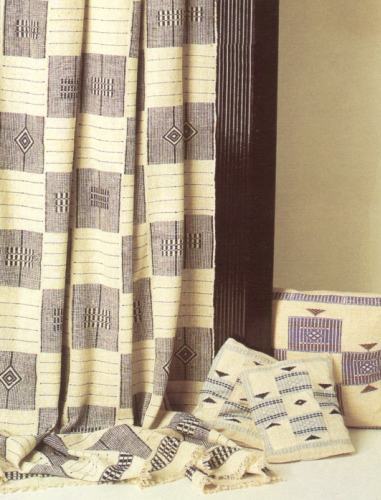West African strip-cloth weaving, by Louise Meyer
Cotton fields surround many African villages. The cotton flower blooms for only one day, then it wilts and a pod begins to form.
When the pod has ripened, it bursts its sides and out pops a cotton ball of light, fluffy cotton - ready to be picked. The soft ripe cotton is gently pulled out of the pod.
Here the cotton is being sold at a market.
The freshly picked cotton contains lots of seeds, which must be removed. The spinners do this preparation work using a metal rod, rolling it over the cotton and pushing down with both hands. Out pop the seeds - 25 to 30 in each boll! The seeds are not thrown away; some are replanted, some are ground up and used for feed for cattle and pigs; but first the oil extracted from this process is sold as cotton seed oil.
The cotton fibers that are not neat and straight get passed through a cotton carder, which contains a bed of pins and is used like a brush.
Some spinners use the older technique of carding with a bow and a gut. It takes longer but it does a fine job.
Most afternoons spinners come out of their houses to sit together in a shady spot for a while. Spinning is done by the women - the grandmothers, mothers and daughters of the village.
They use a light, delicate tool called a spindle to do the job. The spindle is hand made out of a spine from a local bamboo tree and the whorl is of clay. The spindle is made to whirl in a perfect, tight circle controlled by the agile hands of the spinner.
Once the small spindle is full of spun cotton, a spinner will remove it from the spindle and wrap it around a big stick that will hold one to two pounds of thread. In this state the cotton is brought to market where the weavers come to look for good quality yarn.
Threads can be dyed a multitude of different colors. Here it is being dyed in a big kettle on a fire pit. When the color is deep enough the thread is hung to dry in bright loops.
To prepare for weaving, the weaver first counts and measures the thread he will need. He does this by stretching the thread around pegs placed at a specific distance from one another. This is called warping since it creates the warp.
The warp threads are stretched tightly on the loom and lay vertically in front of the weaver.
A boat shuttle holding a bobbin is passed through the warp at a right angle releasing a thread which is beaten down with a comb. This forms the weft and makes the cloth.
Weavers feet rest on treaddles, which are used to control the opening of the warp threads. Some are long peddles...
...Others are round and made from coconut shells.
Much of the strip cloth is woven without patterns, the plain weave shows only the colors of the warp, but some is made with inlaid patterns, like this one still on the loom.
After weaving enough strips of cloth, the weaver brings the strips to tailors to have them sewn together. Here the sewing is being done by young boys.
At least 7 strips are needed to make a traditional cloth, worn in toga-like fashion. More recent uses of cloth include uses as interior decorations such as tablecloths, bedspreads, curtains and pillows.
Written by Louise Meyer
Photos by Targe Lindsay, Nestor Hernandez (page 10) Danny Peck (page 13) and John Nash (page 18)



